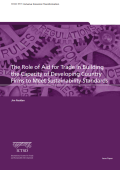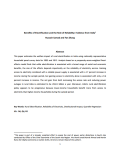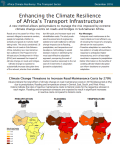
The Global Cleantech Innovation Index (GCII) programme investigates where, relative to GDP, entrepreneurial clean technology companies are most likely to emerge from over the next 10 years – and why. Drawing on a wide range of factors and sources, the study "The Global Cleantech Innovation Index 2017: Which countries look set to produce the next generation of start-ups?" seeks to answer the same question as the 2012 and 2014 GCII reports, namely: which countries currently have the greatest potential to produce entrepreneurial cleantech start-up companies that will commercialize clean technology innovations over the next 10 years? Based on the data contributing to 15 indicators of creation, commercialisation and growth of cleantech start-ups in 40 countries, the study identifies different key trends and shows which countries are falling ahead and below the curve for cleantech innovation.

One of the major contemporary challenges facing developing country firms, and especially small and medium-sized enterprises (SMEs), is the ever increasing number of regulations and sustainability standards required of them if they are to integrate into global value chains. The paper "The Role of Aid for Trade in Building the Capacity of Developing Country Firms to Meet Sustainability Standards" focuses on the potential role that Aid for Trade—aid designed specifically to assist developing countries in overcoming supply-side issues and capture the gains of trade—can play in assisting those developing country SMEs and small producers who are struggling to comply with the sustainability standards required by value chains.

This paper estimates the welfare impact of rural electrification in India using nationally representative household panel survey data for 2005 and 2012. Analysis based on a propensity-score-weighted fixed effects model finds that while electrification is associated with a broad range of social and economic benefits, the size of the effects depends importantly on the reliability of electricity service. Gaining access to electricity combined with a reliable power supply is associated with a 17 percent increase in income during the sample period, but gaining access to electricity alone is associated with only a 9.6 percent increase in income. The net gain from both increasing the access rate and reducing power outages in rural India is estimated to be US$11 billion a year. Moreover, India’s rural electrification policy appears to be progressive because lower-income households benefit more from access to electricity than higher-income households during the sample period.


Roads are a key asset for Africa - they connect villages to economic centers, people to hospitals, children to schools and goods to markets facilitating trade. This study considered 2.8 million km of roads in Sub-Saharan Africa, including new road construction outlined in the Programme for Infrastructure Development in Africa (PIDA) and assessed the impact of climate change on roads and bridges. Climate change is expected to substantially increase disruption time of the network, shorten their rehabilitation life-cycle, and increase repair and rehabilitation costs. The study evaluates the economics of engineering solutions to build resilience to climate change impacts due to flooding, precipitation, and temperature and develops a methodology to assist decision makers in identifying the most cost-effective adaptation approach, comparing the cost of inaction (reactive response) to the net cost of investments in adaptation (proactive adaptation).
Key Messages:
